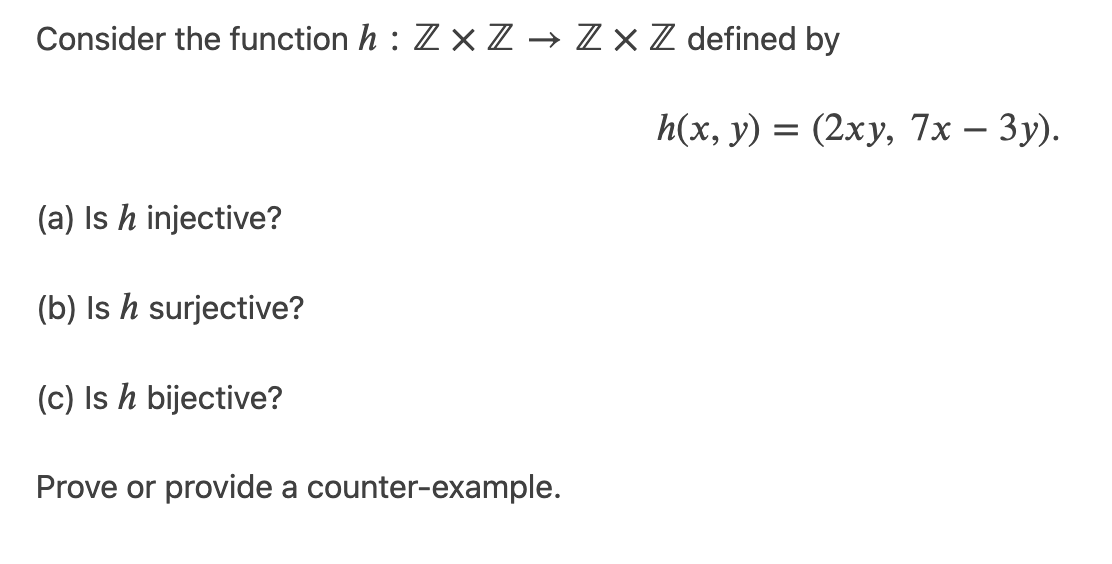Consider the function h : Z × Z → Z ×Z defined by h(x, y) = (2xy, 7x – 3y). %3D (a) Is h injective? (b) Is h surjective? (c) Is h bijective? Prove or provide a counter-example.
Consider the function h : Z × Z → Z ×Z defined by h(x, y) = (2xy, 7x – 3y). %3D (a) Is h injective? (b) Is h surjective? (c) Is h bijective? Prove or provide a counter-example.
Chapter3: Functions
Section3.3: Rates Of Change And Behavior Of Graphs
Problem 2SE: If a functionfis increasing on (a,b) and decreasing on (b,c) , then what can be said about the local...
Related questions
Question
Q 1 v. A

Transcribed Image Text:Consider the function h : Z × Z → Z×Z defined by
h(x, y) = (2xy, 7x – 3y).
(a) Is h injective?
(b) Is h surjective?
(c) Is h bijective?
Prove or provide a counter-example.
Expert Solution
This question has been solved!
Explore an expertly crafted, step-by-step solution for a thorough understanding of key concepts.
Step by step
Solved in 3 steps with 3 images

Recommended textbooks for you


Elements Of Modern Algebra
Algebra
ISBN:
9781285463230
Author:
Gilbert, Linda, Jimmie
Publisher:
Cengage Learning,


Elements Of Modern Algebra
Algebra
ISBN:
9781285463230
Author:
Gilbert, Linda, Jimmie
Publisher:
Cengage Learning,